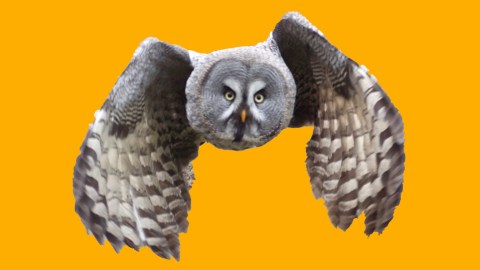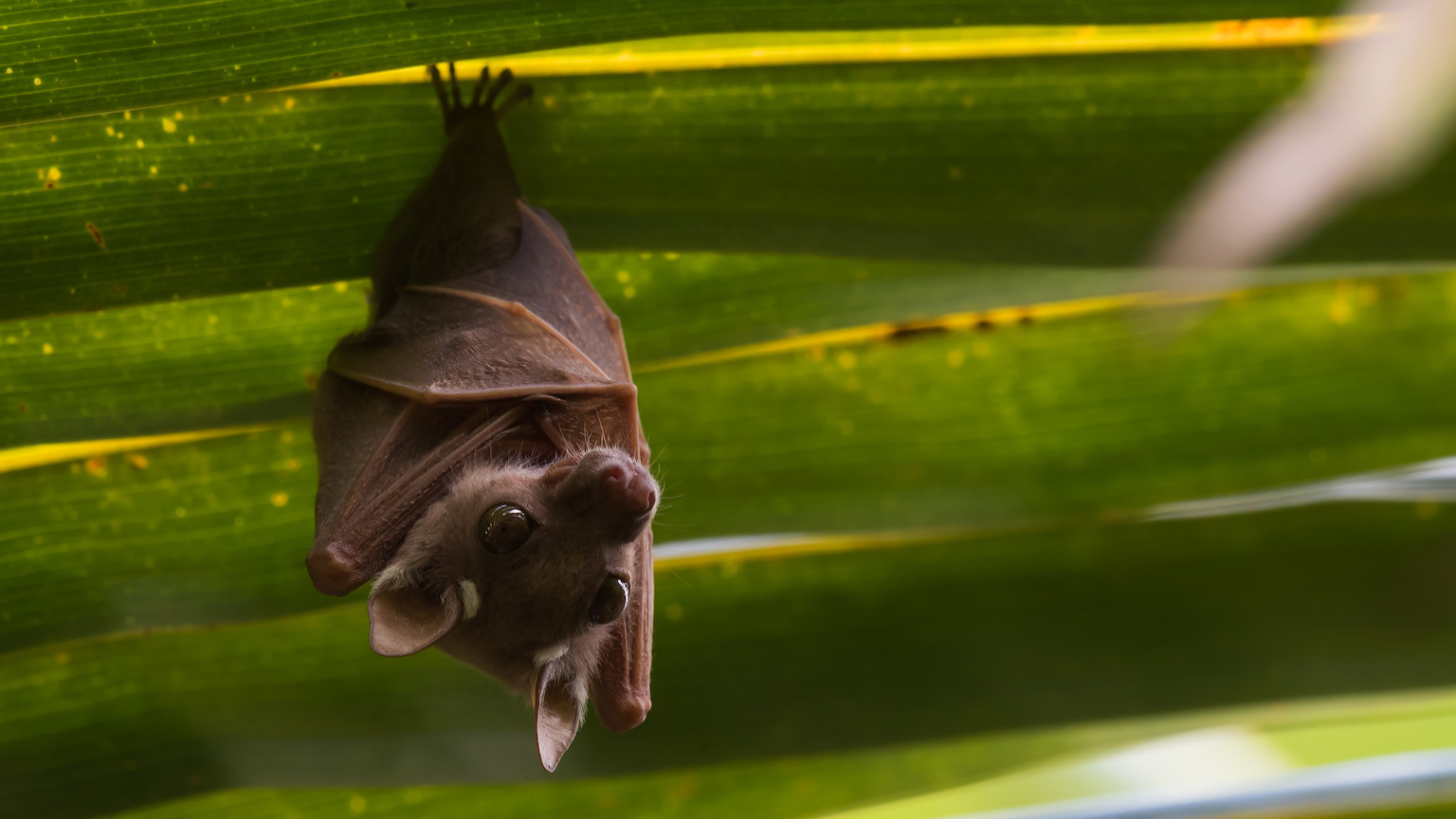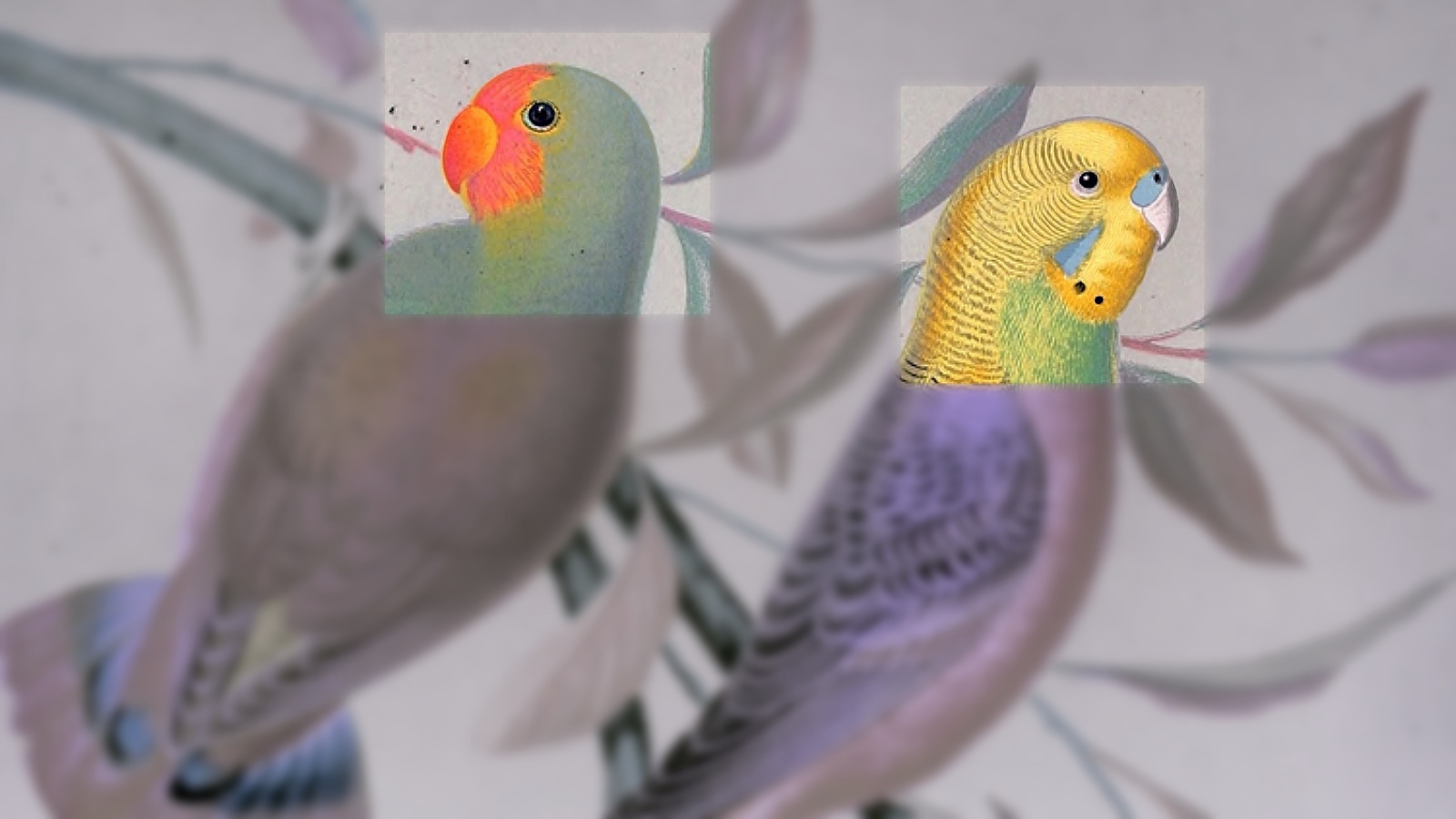The wizardly owl brain uses “Bayesian inference” to find prey

Credit: Great gray owl, Arne List / CC BY-SA 2.0 / Wikimedia Commons
- Owls hunting prey in complete darkness can locate the source of a faint noise in three‑dimensional space.
- Using neuronal responses to sounds, the owl brain builds a multidimensional map of auditory space.
- The owl brain can perform advanced math in the blink of an eye.
A Great Gray Owl is listening, always listening. Its head rotates to glean the source of a sound. Its ears are so acutely tuned, it can discern the faint footfall of a shrew in the forest, the wingbeat of a Canada Jay, the muffled rustle of a vole tunneling deep beneath the snow. It will fly to the spot, hover over it, head facing down toward the sound, then just before impact thrust its legs forward and punch through snow more than a foot and a half deep to seize its prey.
To be able to hunt by sound alone, owls need not only supersensitive ears but also the ability to locate the source of a faint noise in three‑dimensional space sometimes from a distance and sometimes through a thick layer of snow, soil, or leaves. The late Masakazu (Mark) Konishi tackled the problem of how an owl might do this.
Konishi died in 2020. A year later, on the anniversary of his birthday, a large group of researchers — peers and graduate students — gathered for a virtual celebration to honor the scientist and the man and to bring to light new research inspired by his work. The titles of the talks reflected the feeling of awe they shared with Konishi: “The Amazing Barn Owl Cochlea,” “The Owl’s Amazing Midbrain,” “The Amazing Nucleus Laminaris.”
When Konishi heard biologist Roger Payne report that a barn owl can catch a mouse relying only on sound, he wanted to understand exactly how a bird could do this. How can an owl track its prey in complete darkness? How can it work out exactly where a sound is coming from? What sort of brain circuitry allows for that? Konishi knew that facial disks helped in the task, and also the asymmetry of ears — at least in certain owl species.
Some owls, such as Great Horned Owls and Eastern Screech Owls, have ears placed at about the same level on both sides of their heads like most animals do. But others — barn owls, Northern Saw‑whet Owls, and Great Gray Owls — which rely heavily on sound for hunting, have one ear hole higher on one side of the head than the other.
I once had the chance to see a Great Gray Owl up close, a resident male named Percy, at the Skansen Open-Air Museum in Stockholm, Sweden. The asymmetry of Percy’s ears is stunning. Beneath that mass of soft feathers, the left ear sits just below eye level, the right, slightly above. To accurately locate prey, Percy compares the sounds arriving at each ear, how loud they are, and which ear detects them first. Percy’s right ear is more sensitive to sounds coming from above the midline of his face, while the left ear is more sensitive to sounds coming from below. The difference in the time of arrival of sound waves between his two ears, known as the interaural time difference, helps Percy gauge the exact azimuth (or horizontal location) of a sound. The difference in loudness between his two ears helps him to determine the sound’s elevation. Where azimuth and elevation intersect is where he directs his strike. Species like Great Gray Owls, barn owls, and Northern Saw‑whet Owls can locate sounds within just two or three degrees.
There’s more to it. Tracking prey precisely takes two ears, and their asymmetrical arrangement helps. But in the end, it’s the brain that locates sounds in space in a most ingenious way.
By the time Konishi moved from Princeton to Caltech in 1975, he had 21 barn owls trained to strike at loudspeakers producing all kinds of sounds, including one owl named Roger, after Roger Payne. (It should be noted that Roger the owl turned out to be female; at one point, “he” laid an egg.) Roger starred in so many publications that the researchers celebrating Konishi thought he might be among the most famous published animals, rivaling Alex the African Gray Parrot, who, together with Harvard scientist Irene Pepperberg, taught the world so much about bird brains and intelligence.
Konishi’s research got a boost when a Caltech machinist famous for working on the Viking lander in the first Mars mission designed and built some fancy equipment for his owl studies — an ingenious light‑rail, arranged in a semicircle. Attached to the rail was a small remote control loudspeaker that could travel around the head of an owl at a constant distance in both horizontal and vertical directions. With the help of this space‑based gadget, Konishi and his doctoral student Eric Knudsen made a remarkable discovery. Certain auditory neurons in an owl’s brain respond only when a sound is coming from a particular location. By comparing the responses to sound by neurons in the cochlea of both ears, the brain builds a kind of multidimensional map of auditory space. This allows owls to fix the location of prey with speed and precision.
This was a surprise. Animals have brain maps for vision and touch, but these are built from visual images and touch receptors that map onto the brain through direct point‑to‑point projections. With ears, it’s entirely different. The brain compares information received from each ear about the timing and intensity of a sound and then translates the differences into a unified perception of a single sound issuing from a specific region of space. The resulting auditory map allows owls to “see” the world in two dimensions with their ears.
The space‑specific neurons in the owl’s specialized auditory brain do advanced math when they transmit their information.
This proved to be a big leap toward understanding how the brain of any animal, including humans, learns to grasp its environment through sound. Think of it. Standing in a forest, you hear the crack of a falling branch or the rustle of a deer’s step in the dry leaves. Your brain calculates the time and intensity of sound to determine where it’s coming from. Owls do this task with incredible speed and accuracy. Each cochlea in the owl provides the brain with the precise timing of the sound reaching that ear within 20 microseconds. This determines how accurately the brain can calculate the interaural time difference, which in turn determines the accuracy of the localization of a sound in the azimuth. “The precision in microseconds provided by the owl cochlea is better than in any other animal that has been tested,” says Köppl. “We have big heads, so the interaural time differences are larger, making the task for cochlea and brain easier. In a nutshell, it is the combination of a small head and very precise localization that makes the owl unique.”
And here’s a finding to drop the jaw. José Luis Peña, a neuroscientist at the Albert Einstein College of Medicine, and his collaborators have discovered that the sound localization system in a barn owl’s brain performs sophisticated mathematical computations to execute this pinpointing of prey. The space‑specific neurons in the owl’s specialized auditory brain do advanced math when they transmit their information, not just adding and multiplying incoming signals but averaging them and using a statistical method called “Bayesian inference,” which involves updating as more information becomes available.
All of this calculating in less than the blink of an eye. I know, it’s mind‑blowing.





